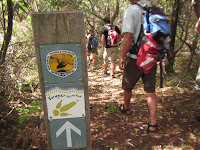That became the guiding principle for my 10-day trip there, and it made me love Cambodia even more than I already did.
My latest piece for the Sydney Morning Herald, the cover story in this weekend's travel section, is about the rise of charitable tourism in Cambodia. Here's an excerpt:
 |
| S-21 survivor Bou Meng |
Assisted development
Every country has a dark side. Cambodia's is just more visible than most, and more recent - decades of civil war, genocide and foreign occupation that ended only in 1993 - but that's part of its appeal. The country's uniqueness lies in its stories and the spirit of its people. And, increasingly, tourism is playing a part in its recovery ...
Behind the welcoming smiles of the Cambodians you meet there, however, it's impossible to ignore the signs that all is still not well.
You see people with limbs stolen by landmines. Anyone over about 40 - a tuk-tuk driver, a vendor at Phnom Penh's Russian Market - remembers the Khmer Rouge's brutal regime (1975-1979). There is widespread poverty, child abuse and HIV infection (Cambodia has the highest incidence of HIV in south-east Asia).
You see people with limbs stolen by landmines. Anyone over about 40 - a tuk-tuk driver, a vendor at Phnom Penh's Russian Market - remembers the Khmer Rouge's brutal regime (1975-1979). There is widespread poverty, child abuse and HIV infection (Cambodia has the highest incidence of HIV in south-east Asia).
Then there are places such as the Killing Fields, just outside Phnom Penh, that break your heart and inspire you to help in some way. Read the full story here.
 He eventually moved to the US, to Los Angeles, and by chance happened to land the role of Cambodian translator Dith Pran in The Killing Fields (1984), for which he won an Academy Award. (A classic movie, by the way, winner of three Academy Awards and directed by Roland Joffe.)
He eventually moved to the US, to Los Angeles, and by chance happened to land the role of Cambodian translator Dith Pran in The Killing Fields (1984), for which he won an Academy Award. (A classic movie, by the way, winner of three Academy Awards and directed by Roland Joffe.)It's a compelling book, beautifully co-written by journalist and historian Roger Warner, and has been called "the best book on Cambodia that has ever been published".
If you haven't yet been to Cambodia, go. And before you do, see The Killing Fields and read Ngor's book. It'll give you a greater understanding of this beautiful little country and the humanity of its people.
You can learn more about Dr Ngor through the Dr Haing S. Ngor Foundation website.
Have you been to Cambodia? How did it affect you?









